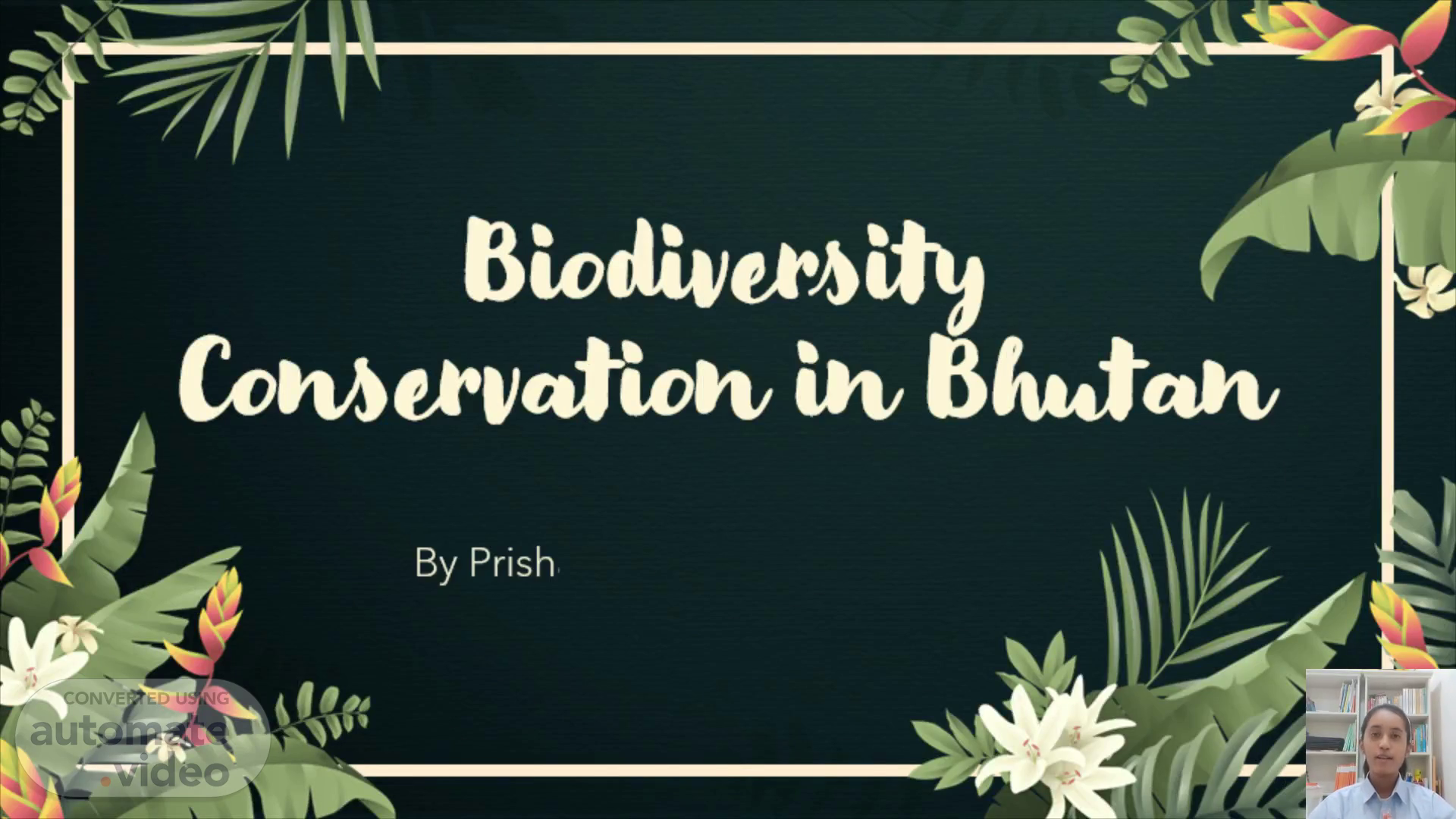
Page 1 (0s)
Biodiversity Conservation in Bhutan. By Prisha Singh and Lolakshi Ghag.
Page 2 (10s)
Bhutan. Bhutan is one of the smallest countries in the world. But its commitment to conservation is bigger than most..
Page 3 (28s)
HOW DID BHUTAN GET WHERE IT IS?. “ Every government policy is vetted according to GNH, and what the Bhutanese call the four pillars: good governance, sustainable promotion of socioeconomic development, preservation of culture and environmental conservation..
Page 4 (53s)
The Education and Youth Program. . There is an urgent need for Bhutanese children and youth to be effectively engaged and empowered in order to have their own unique capacity to create a sustainable future for Bhutan..
Page 5 (1m 2s)
. Education for sustainable development Youth Empowerment leadership program.
Page 6 (1m 14s)
. A tightly controlled tourist policy, which makes tourists—though not Indians—pay $250 per day, has restricted the flow of visitors and kept forests unspoilt ..
Page 7 (1m 40s)
' vie. As Bhutan’s timber requirements increase, the country is also expected to have to import timber from India..
Page 8 (1m 56s)
The Traditional Practices that Contributed to Biodiversity Conservation in Bhutan.
Page 9 (2m 4s)
The three social restriction systems were intended to protect and conserve forest resources and biodiversity. The three main social restriction forms were:.
Page 10 (2m 21s)
Interestingly, only 3 of 56 respondents in this study believed that the three social restriction systems were directly intended to protect and conserve forest resources and biodiversity ..
Page 11 (2m 34s)
The Traditional Social Forms. The Reedum period coincides with natural regeneration and sprouting (spring to autumn) for most plant species. Sokdum was never intended to benefit wildlife conservation. Rather, it was to avoid killing living creatures. However, Sokdum corresponded with a period of high risk of forest fires (February–March). Tsadum seems to have played an important role in grassland conservation in the communities as it corresponded with the regeneration and Sprouting season of grasslands..
Page 12 (3m 16s)
Though the social restriction systems in question were never enforced directly with an objective to conserve natural resources and biodiversity, they played an indirect role in managing forest resources for biodiversity. The decline of these social restriction systems may have unexpected (negative) conservation consequences, which may or may not be addressed by current scientific management systems..
Page 13 (3m 41s)
BHUTAN AT CROSSROADS.
Page 14 (3m 47s)
The Situation of the Past. Bhutan’s natural resources are on the verge of being more threatened now than ever before, despite the government’s political will and conservation milestones. Why? The country has changed more in the last 50 years than the past 500 years combined..
Page 15 (4m 7s)
The Cause. Rapid modernization, the adoption of democracy, and a dramatic shift in demographics have all contributed to a country in transition. With change comes new challenges, particularly for the environment. Natural resources are exploited as new industries are created and existing ones grow to meet the needs of a rapidly growing population. And, as in many Asian countries, the impact of climate change and the poaching of wildlife are on the rise..
Page 16 (4m 24s)
What can we do?. .
Page 17 (4m 33s)
. Balance is the solution.. “We need to balance the need for economic development – like hydropower and tourism – with the need to protect natural resources,” said WWF Bhutan Country Representative. Since the 1970s, WWF has worked with the Government of Bhutan, Bhutan-based nonprofit organizations and local communities to achieve this balance. More is needed to keep pace with the speed and scale of change now impacting Bhutan..
Page 18 (5m 8s)
Let’s conserve to preserve.. Plant.
Page 19 (5m 11s)
Thank you!. Smiling face with no fill.